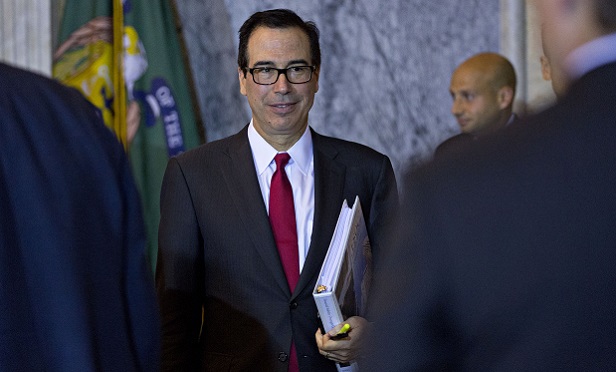
 Treasury Secretary and FSOC Chairman Steven Mnuchin. (Photo: Andrew Harrer/Bloomberg)
Treasury Secretary and FSOC Chairman Steven Mnuchin. (Photo: Andrew Harrer/Bloomberg)
An examination of risky activities of nonbanks like insurers and asset managers will be federal agencies' first line of defense when the agencies are assessing threats to the financial system, under new guidance proposed Wednesday.
The Financial Stability Oversight Council voted unanimously to propose interpretive guidance for nonbank financial company designations that would also put in place a cost-benefit analysis requirement before any firm or entity is designated as systemically important.
The system updates how the United States deals with financial threats to the market as a whole under the Dodd-Frank Act, which was enacted in response to the financial meltdown of 2008-2009.
This would update the 2012 interpretive guidance formerly used to review asset managers and insurance companies, and even designate a few of the former.
A nonbank financial company would get a systemically important financial institution (SIFI) label only if the "expected benefits justify the expected costs of the designation," the Treasury Department said in a statement.
A designation would be made only if, after recommendations to and work with primary financial regulators, there was no system put in place to address financial system risks in time.
Federal Reserve Chairman and FSOC member Jerome Powell said during the public meeting at the Treasury building following the vote that an entity-based approach where a firm itself is designated as systemically risky should only be "used sparingly."



